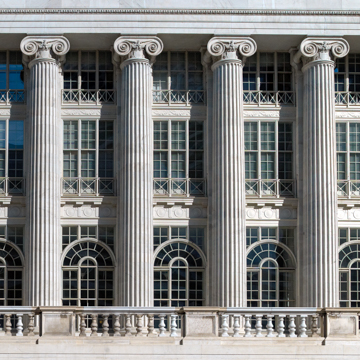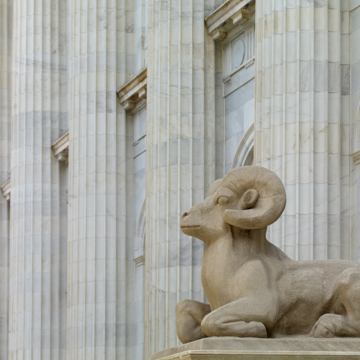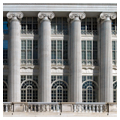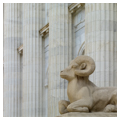You are here
Byron White U.S. Courthouse (Main Post Office)
Denver's finest Neoclassical building is a five-story Greek temple handsomely masked by a giant colonnade and faced in Colorado Yule marble. On the Stout Street facade of the full-block building, sixteen three-story, fluted Ionic columns form a heroic portico atop a cascading marble staircase. Round-arched first-floor fenestration carries into the interior open courts. The names of postmasters general and of noted Pony Express riders are carved in the marble end walls of the dramatic, vaulted lobby. Gladys Caldwell Fisher, wife of Denver architect Alan Fisher, sculpted the mountain sheep flanking the 18th Street entrance. The Postal Service, banished to a hideous Post-modern address at 20th and Curtis, surrendered this building to the federal judiciary, which lavished millions on an opulent 1994 restoration for the Tenth Circuit Court of Appeals. The courthouse is named for the University of Colorado football star whom President John Kennedy appointed to the U.S. Supreme Court.
Writing Credits
If SAH Archipedia has been useful to you, please consider supporting it.
SAH Archipedia tells the story of the United States through its buildings, landscapes, and cities. This freely available resource empowers the public with authoritative knowledge that deepens their understanding and appreciation of the built environment. But the Society of Architectural Historians, which created SAH Archipedia with University of Virginia Press, needs your support to maintain the high-caliber research, writing, photography, cartography, editing, design, and programming that make SAH Archipedia a trusted online resource available to all who value the history of place, heritage tourism, and learning.






